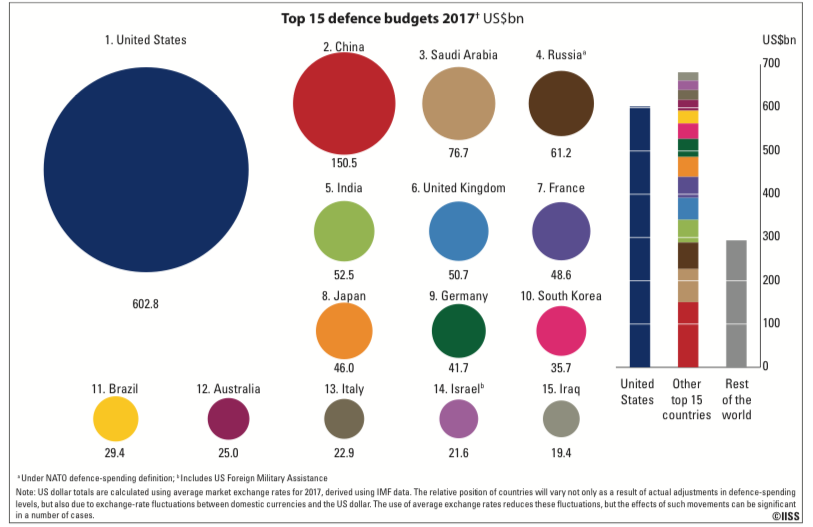On Monday, the Trump administration released its budget request for fiscal year 2019, and it included a massive increase for defense spending. Coming on the heels of a congressional deal to raise the caps on both domestic and defense spending, the request calls for about $716 billion for national defense (which includes the budget for the Department of Defense, spending for Overseas Contingency Operations, and nuclear weapons programs at the Department of Energy). Secretary of Defense James Mattis declared himself satisfied with the increased budget and said it would allow the Pentagon to execute its recently released National Defense Strategy.
This week also marked the release of the 2018 Military Balance, a publication of the International Institute for Strategic Studies that provides estimates on international military spending. As the chart below demonstrates, the Military Balance provides useful context for understanding American military spending in comparison to the major power rivals with which the National Defense Strategy is ostensibly most concerned.
While this same chart a decade ago would have shown the United States maintaining a larger share of global defense spending, Washington still maintain a sizable lead in spending over rivals China and Russia. Moreover, of the top fifteen countries in terms of defense spending listed here, twelve are U.S. allies or otherwise maintain friendly relations with the United States.
These figures can be misleading though. As advocates for ever-increasing levels of defense spending are quick to point out, the U.S. military—unlike its rivals in Russia and China—undertakes more missions that require power projection across the globe. How money is spent also matters, with a greater proportion of the U.S. defense budget going to rising personnel costs. Moreover, an ally such as Iraq—which rounds out the top fifteen countries in terms of defense spending—does not provide additive capabilities and is really a security dependent rather than an ally.
And those are fair points. However, even with those caveats, U.S. military spending still dwarfs that of its leading rivals—ostensibly, the top priority of the Pentagon’s strategy.
